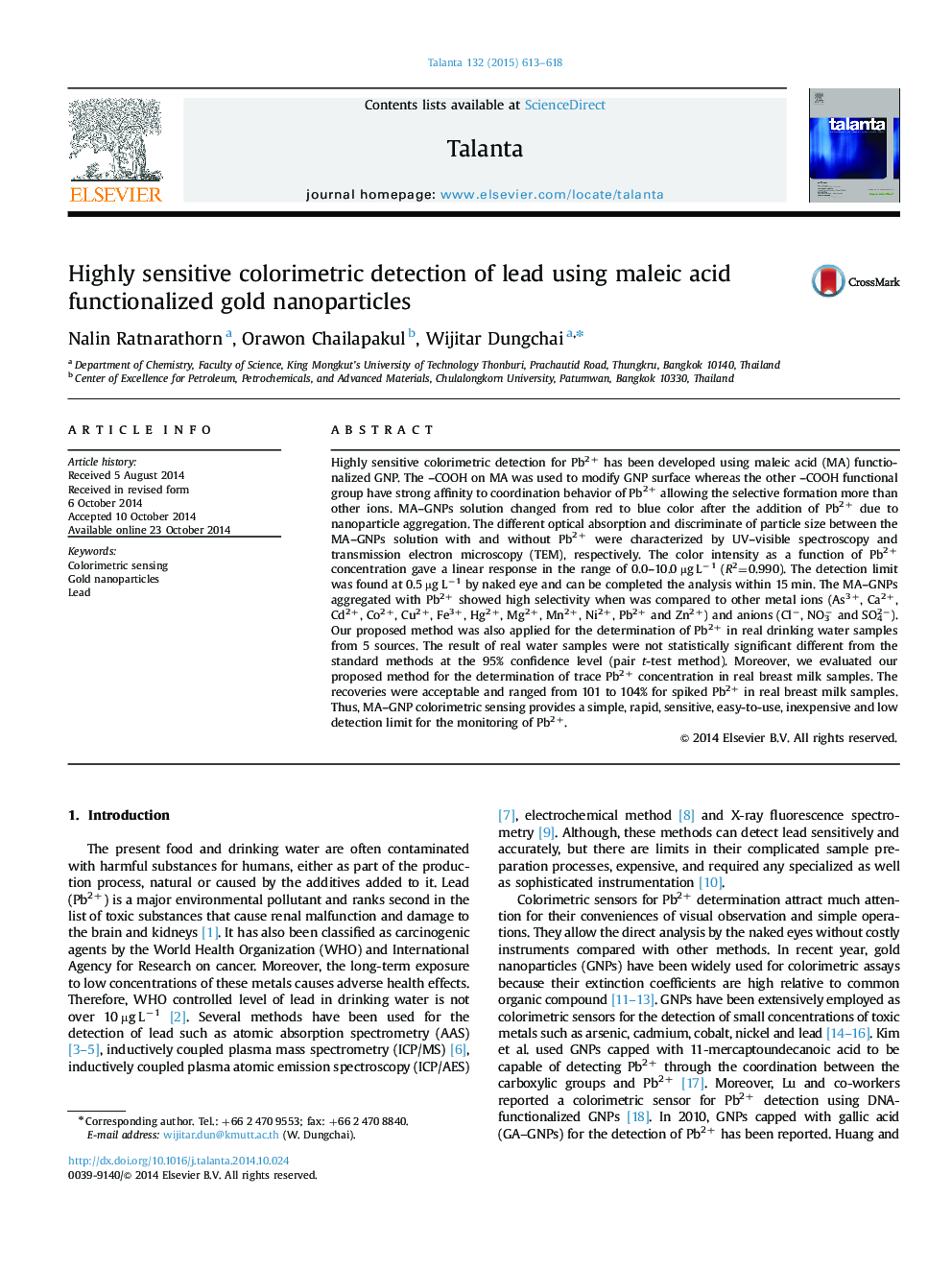| Article ID | Journal | Published Year | Pages | File Type |
|---|---|---|---|---|
| 1242061 | Talanta | 2015 | 6 Pages |
•Our colorimetric sensing provides highly sensitive detection for Pb2+ (0.5 μg L−1).•The GNP modified with maleic acid has strong affinity to Pb2+.•Our method can be used for the determination of Pb2+ within 15 min.•Our method was successfully applied for the Pb2+ determination in milk samples.
Highly sensitive colorimetric detection for Pb2+ has been developed using maleic acid (MA) functionalized GNP. The –COOH on MA was used to modify GNP surface whereas the other –COOH functional group have strong affinity to coordination behavior of Pb2+ allowing the selective formation more than other ions. MA–GNPs solution changed from red to blue color after the addition of Pb2+ due to nanoparticle aggregation. The different optical absorption and discriminate of particle size between the MA–GNPs solution with and without Pb2+ were characterized by UV–visible spectroscopy and transmission electron microscopy (TEM), respectively. The color intensity as a function of Pb2+ concentration gave a linear response in the range of 0.0–10.0 µg L−1 (R2=0.990). The detection limit was found at 0.5 µg L−1 by naked eye and can be completed the analysis within 15 min. The MA–GNPs aggregated with Pb2+ showed high selectivity when was compared to other metal ions (As3+, Ca2+, Cd2+, Co2+, Cu2+, Fe3+, Hg2+, Mg2+, Mn2+, Ni2+, Pb2+ and Zn2+) and anions (Cl−, NO3− and SO42−). Our proposed method was also applied for the determination of Pb2+ in real drinking water samples from 5 sources. The result of real water samples were not statistically significant different from the standard methods at the 95% confidence level (pair t-test method). Moreover, we evaluated our proposed method for the determination of trace Pb2+ concentration in real breast milk samples. The recoveries were acceptable and ranged from 101 to 104% for spiked Pb2+ in real breast milk samples. Thus, MA–GNP colorimetric sensing provides a simple, rapid, sensitive, easy-to-use, inexpensive and low detection limit for the monitoring of Pb2+.
Graphical abstractFigure optionsDownload full-size imageDownload as PowerPoint slide
